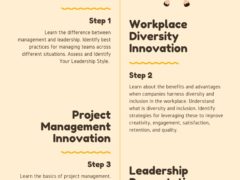Project integration management involves the management of several interdependent lines, strategies, resources, outputs, or deliverables to reach align goals. Although this sounds complex, integration management is common practice among portfolio and operations levels. It can be complex when planned at the granular level. The barriers to project integration are frequently shared with goals to support innovation. Yet integration and innovation are not necessarily aligned.
The spreadsheet image provides a high level overview of how project integration was used across seven projects. The seven most common components of project integration management include the following:

- Integration Management
- Scope Management
- Time Management Cost Management
- Human Resource Management
- Communications Management, &
- Risk Management
Additional project process tools that are commonly used to support integration efforts include the following:

- Project Charter
- Project Management Plan
- Managing Project Work Processes & Tools
- Monitoring Project Work Processes & Tools
- Change Management Processes & Tools, and
- Closeout and Project Delivery Processes & Tools

The Project Management Body of Knowledge (PMBOK, 2017) states that the project management team must select the appropriate processes, tools, and strategies. These must be right for their project. Project owner(s) share this responsibility.
The updated version of the PMBOK does not take a formal or prescriptive approach. It recognizes that project management is not a ‘one-size-fits-all’ approach.
The project team and owners need to find strategies and tools. These must be aligned with the business and project culture. Project processes and tools are less likely to be adopted. They are misaligned with the current business culture and less likely to be implemented successfully.
Consider the example of the different projects depicted in the following spreadsheet.

Each project impacts different business unit areas, involved different technologies, different teams, and created different deliverables.
The following portfolio project includes three core deliverables. Project-1 provided deliverables used in project-2 and similarly for project-3. An emphasis on project integration was essential to the team’s success. A conceptual GANTT schedule is provided to show how each of the project deliverables overlap.
The inter-dependencies can also be graphically depicted along the 5 project management process groups:

- Initiation
- Planning
- Execution
- Monitoring & Controlling
- Closeout
These five process groups are interdependent. A project plan is developed in the planning stage. It will be used throughout the project and across the remaining process groups.
This traditional hierarchical graph depicts the three core projects on the top horizontal axes. Each of the deliverables is assigned to each project area following along the vertical axis.
How the project integration plan is documented and used will depend on the business environment. Tools used for documenting the project plan, structure, and integration framework includes:
- MSProject
- Visio
- Publisher
- Excel, etc.
Conclusion
Project integration management is crucial. It is a key reason why a project management methodology is needed. However, many projects continue to report failure to deliver as intended.
The project management body of knowledge (PMBOK) acknowledges that the framework is not a ‘one-size-fits-all’ approach. It needs to be tailored to each setting. But with this tailoring comes the risk of the framework being inadequate to meet performance requirements.
The PMBOK provides suggestions of the minimal components of a project integration plan. This framework can be used to support your team’s existing efforts to develop an effective project structure.
Travis Barker, MPA GCPM
Innovate Vancouver is a Technology and Business Innovation Consulting Service (TBICS) located in Vancouver, BC. Contact Innovate Vancouver to help with your new project.




